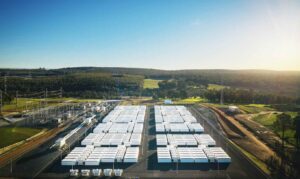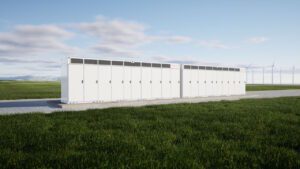
Australia’s first battery storage “gigafactory” is likely to be built in Darwin, with a new consortium planing to establish a large-scale lithium-ion manufacturing plant by the end of 2018.
Energy Renaissance, a company backed by engineering group UGL (now owned by CIMIC) says the first phase of the $100 million plant will create four distinct production lines, and will target niche utility and industrial scale markets in Australia and Asia.
Energy Renaissance is partnering with US battery storage company 24M, and is said to have the enthusiastic support, if not the financial backing, of the new Labor government, which also has a 50 per cent renewable energy target by 2030.
“Renaissance One” – as it will be known – is one of at least two “gigafactory” proposals for Australia, with the Boston Energy consortium led by former Macquarie Group property guru Bill Moss looking at a much larger 15GWh production line in Townsville.
It also comes on the same day that a 5MW battery storage installation was announced for Alice Springs, where Vector Energy won a tender for LG Chem batteries that will allow a significant increase in solar capacity in the city, already with the highest penetration in the country.
Renaissance Energy managing director Brian Craighead said Australia was a logical place to build a gigafactory, given its obvious demand for battery storage, its abundant resources of lithium, cobalt and graphite, and its proximity to Asia markets.
“Australia is the only country that you could throw a wall around and still have all the materials you need – cobalt and graphite and lithium – for battery storage,” Craighead told RenewEconomy in an interview.
Battery storage is expected to be a huge market in Australia, with the likes of the CSIRO predicting more than 90GWh of battery storage, much of it “behind the meter” by households and businesses, but also partnered with large scale renewables and in grids.
Large arrays are already being planned for large-scale solar plants across the country. Lyon Group has announced projects totalling 1GW of battery storage to accompany its planned solar installations, to help with grid security, offset network upgrades, smoothing out solar power and shifting loads.
The factory has been more than two years in the planning. Chair Su McCluskey, the former head of Regional Australia, stood down in 2015 to “pursue other opportunities” and this turns out to be one of them. UGL has a 10 per cent stake, while the remaining owners, including McCluskey and Craighead, are private.
Craighead said the factory will focus on the utility, industrial, defence, telco, mining, and off-grid sectors – and not the household market. Around 70 per cent of production will be targeted for export.
The technology – semi-solid lithium-ion – will be designed specifically to take into account the warmer climate in Australia and Asia. Its target market means container-style installations full of batteries, and temperature control is the key and air-conditioners a significant draw on resources.
“Batteries in Australia are still pretty expensive. And although the cost per kWh is coming down due to the scale of manufacturing, most of the chemistries have an operating window of around 25°C. So y0u need air conditioning to keep temperatures down, and that’s a significant parasitic load.”
The Cambridge, Massachusetts-based 24M describes its manufacturing process as significantly more efficient than conventional lithium-ion products.
“The simple truth is that lithium-ion batteries are made the wrong way,” it says on its website.
“The process is cumbersome. It’s wasteful. It’s woefully inefficient. 24M’s novel manufacturing process strips out the waste, speeds production and reduces the overall footprint to slash today’s lithium-ion battery costs by 50% and accelerate its adoption.”
Craighead expects to have up to seven different production lines producing niche products – all of around 150MWh each. He expects four such lines to be in place by the opening late next year.
He says Darwin was chosen over other port cities, such as Newcastle, Geelong and Gladstone, because of the availability of raw materials, the proximity to Asia markets, the local engineering expertise and the support of the government.
The size of the plant is dwarfed by the 50GWh Tesla gigafactory currently being completed in Nevada, but that factory has a guaranteed market for Tesla electric vehicles and its Powerpack and Powerwall products.
“Energy storage is the key to the future,” he says. “There are times when pumped hydro works perfectly, time for hybrid plants, and times for battery storage. Stored energy makes so many things possible that weren’t possible before.”









